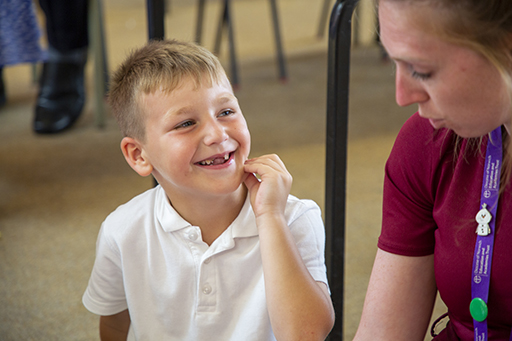4 Reading for Pleasure in the school curricula
In school systems in many parts of the world, teacher efficacy is measured in relation to children’s assessment scores; this puts pressure on teachers to focus on reading proficiency. As a consequence, a research study found that, in some schools, even lesson time allocated to Reading for Pleasure was oriented towards the technical aspects of reading, rather than enjoyment (Hempel-Jorgensen et al., 2018). This is despite both reading instruction and Reading for Pleasure each requiring dedicated time, resources and distinct, yet complementary, pedagogies.
It can be a real challenge to achieve a balance between high-quality reading instruction and dedicating time purely for Reading for Pleasure in school; however, it is crucial that both aspects are viewed as equal and essential components in literacy education.

Table 1 shows the correspondence and distinctions between reading instruction and Reading for Pleasure.
| Reading Instruction is oriented towards: | Reading for Pleasure is oriented towards: |
|---|---|
| Learning to read | Choosing to read |
| The skill | The will |
| Decoding and comprehension | Engagement and response |
| System readers | Lifelong readers |
| Teacher direction | Child direction |
| Teacher ownership | Child ownership |
| Attainment | Achievement |
| The minimum entitlement: the ‘expected standard’ | The maximum entitlement: a reader for life |
| The standards agenda | The reader’s own agenda |
It is important to note that children’s skill to read influences their will to read and, equally, the will to read influences the skill to read. For example, a survey of 6–7-year-olds in primary schools in England found that children’s self-reported attitudes toward reading were positively associated with their word reading ability (McGeown et al., 2015).
In essence, if educators and parents can help children to enjoy reading, they will become better readers, and vice versa. A love of reading is not an innate human characteristic; it can be nurtured and cultivated over time with the right support and focused attention to Reading for Pleasure pedagogies.
Activity _unit2.4.1 Activity 1 Reflecting on your reading curriculum
Have another look at Table 1 and think about the activities in the reading curriculum during an average week in your classroom. In your learning journal, make a note in two columns of activities that are oriented toward developing children’s skill to read on one side, and those oriented towards developing children’s will, or desire to read on the other.
If you haven’t already, you can download a copy of the learning journal [Tip: hold Ctrl and click a link to open it in a new tab. (Hide tip)] now to save and use throughout the course.
Comment
Have a look at the ratio of ‘skill’ and ‘will’ oriented activities. Do you feel that your curriculum is currently well-balanced and fosters positive attitudes toward reading? Is there daily curriculum time dedicated to encouraging children to become engaged and keen readers? This may include read-alouds, independent and free-choice reading time, informal talk about texts, library visits and so forth.
The following sections will introduce you to some research that has examined effective Reading for Pleasure pedagogy and classroom practice.
